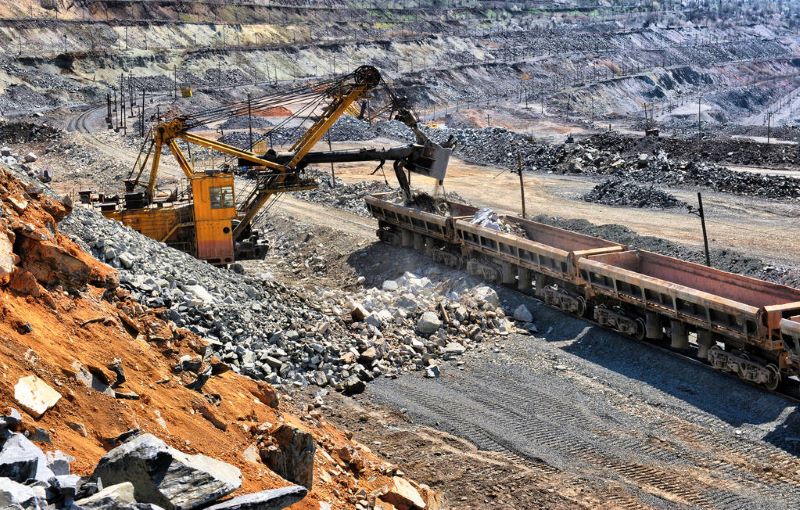Earlier this month, U.S. President Trump said in an interview with Fox TV that he had proposed to Ukraine to exchange Ukraine’s rare earth resources, ports and infrastructure worth about $500 billion in exchange for U.S. support. However, the real situation may be that Ukraine has only scorched earth but no rare earths, and the hype about its rare earth resource potential may be initiated by the Ukrainian government itself to win U.S. support.
Minerals in Ukraine
A 2023 study by experts from the French Geological and Mineral Survey and other institutions found that Ukraine has more than 100 minerals, including iron, manganese and uranium. According to the European Commission, Ukraine is the world’s eighth largest manganese producer, and its titanium and graphite production ranks 11th and 14th respectively. In addition, Ukraine is a potential source of more than 20 key raw materials. According to the 2024 edition of World Mining Data, Ukraine ranks 40th among global mineral producers.
Despite this, Ukraine’s mineral resources are not known for its rich rare earth reserves. Elena Safirova, a Ukraine expert at the U.S. Geological Survey, said, “Ukraine does have some deposits containing rare earth elements, but they have not been mined.” The French Geological and Mineral Survey also said that Ukraine’s rare earth resources need further exploration and development, which requires a lot of investment. The Ukrainian government has said that the known rare earth metals in Ukraine exist in six undeveloped deposits, and the development of the largest deposit requires an investment of $300 million to start. A report this month by Standard & Poor’s, an international rating agency, said that the Ukrainian government’s forecast of domestic rare earth resources is based on “Soviet-era assessments of some difficult-to-mine rare earth deposits” and that mining rare earth deposits in Ukraine may not be profitable.
U.S. Purpose
Before the outbreak of the Russian-Ukrainian conflict, major Western mining companies did not express much interest in developing Ukraine’s mineral resources. Ukraine claims to have the largest lithium reserves in Europe, but global lithium production capacity has surged in recent years and prices have plummeted. Ukraine’s titanium mines mainly produce ilmenite and rutile, but they cannot supply the sponge titanium needed by the US defense industry, which is widely used in modern jet engines, tank armor and other defense industries.
As a global technological and military power, the United States has a huge demand for rare earths. However, the current situation of the United States’ own rare earth resources is not optimistic. According to the United States Geological Survey, the United States’ rare earth reserves are only 1.8 million tons, accounting for 2% of the world’s total reserves. In addition, the United States’ rare earth resources are mainly concentrated in the mountain pass area of California, which is difficult to mine, resulting in a delay in increasing production. At present, the key mineral agreement being discussed by the United States and Ukraine also includes lithium, graphite, oil and gas, and infrastructure such as ports. Now it seems that the United States may want more than just Ukraine’s rare earths. They want more to ensure the United States’ commercial interests and recover the Biden administration’s investment in Ukraine.

The Value of Ukraine
Ukraine is an industrial power and a metallurgical power. The port of Odessa on the northern coast of the Black Sea is still under Ukraine’s control, which is very economically valuable. At present, the areas controlled by Ukraine are rich in resources and have relatively complete infrastructure. Once the Russian-Ukrainian conflict ends, these areas may become the focus of commercial development.
At present, shipping plays an important role in Ukraine’s resource exports. According to the official website of Lloyd’s List, an international shipping data agency, cargo transportation in major Black Sea ports such as Chernomorsk, Yuzhny and Odessa in southern Ukraine stabilized last year, and Ukraine’s independent operation of the “temporary Black Sea corridor” has lasted for more than a year.
Changes in the Geopolitical Landscape
The fierce game between the United States and Ukraine over mineral resources has had a profound impact on the geopolitical landscape and triggered a series of chain reactions. The behavior of the United States has had a huge impact on Europe’s energy security. Ukraine has abundant energy resources, such as natural gas. The United States’ strong demand for Ukrainian minerals may affect the development and supply of Ukraine’s energy resources, and then affect Europe’s energy supply. European countries have always been highly dependent on Russia’s energy supply. After the Russian-Ukrainian conflict, European countries tried to find new energy supply channels. Ukraine’s energy resources are of great strategic significance to Europe. The behavior of the United States has put European countries in a more passive situation on the issue of energy security and has also exacerbated the contradictions between European countries and the United States.
The conflict between the United States and Ukraine has also had a serious impact on the relationship between the United States and Europe. The United States’ arbitrary behavior on the Ukraine issue, disregarding the interests of European allies, has made European countries feel ignored and betrayed by the United States. European countries have begun to re-examine their relationship with the United States and seek a more independent foreign policy. The concept of “European strategic autonomy” proposed by French President Macron has been responded to by more and more European countries. This shows that the relationship between the United States and Europe is undergoing subtle changes, and the influence of the United States in Europe may be weakened to a certain extent.












